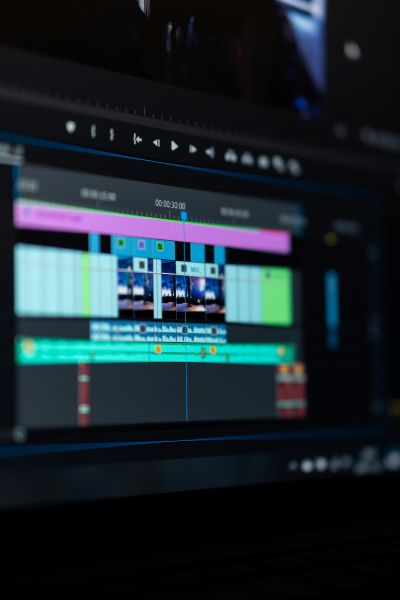The Evolution and Impact of Content & Video Moderation Technology
- Posted in:
- Software
In the digital age, the proliferation of user-generated content across various platforms has transformed how we consume and share information. From social media networks to video-sharing platforms, the volume of content being uploaded every minute is staggering. This surge in content creation and sharing has brought to the forefront the critical need for effective content moderation and video moderation. As platforms strive to maintain a balance between free expression and user safety, the role of software, tools, and services in moderation has become increasingly sophisticated and essential.
The Growing Importance of Content & Video Moderation
The rise of digital media has democratized content creation, allowing anyone with an internet connection to share their thoughts, experiences, and creativity with a global audience. However, this openness has also led to challenges, particularly in managing the quality and appropriateness of content. Content moderation involves the process of monitoring, filtering, and sometimes removing user-generated content to ensure it adheres to platform guidelines, legal standards, and community expectations.
Video moderation, a subset of content moderation, specifically deals with the oversight of video content. Given the immersive nature of videos, the potential for harm—whether through misinformation, graphic violence, or hate speech—is significant. Effective video moderation is crucial for maintaining a safe and trustworthy environment for users.
The importance of robust moderation systems has been underscored by numerous high-profile incidents where platforms faced backlash for failing to promptly remove harmful content. These incidents have highlighted the need for proactive and efficient moderation strategies that can adapt to the ever-evolving landscape of digital media.

The Role of Software and Tools in Moderation
At the heart of modern content moderation and video moderation are advanced software and tools that leverage artificial intelligence (AI) and machine learning (ML) to automate the process of content review. These technologies are designed to handle the sheer scale of content being uploaded, which is far beyond the capacity of human moderators alone.
AI-driven software can analyze text, images, and videos to identify patterns and anomalies that may indicate inappropriate content. For instance, natural language processing (NLP) algorithms can detect hate speech, harassment, or threats by analyzing the language used in text-based content. Similarly, image and video recognition technologies can identify violent or explicit imagery by analyzing visual elements.
One of the key advantages of using software and tools for moderation is their ability to process vast amounts of data quickly and efficiently. This allows platforms to respond to potential issues in real-time, minimizing the exposure of users to harmful content. Additionally, these technologies can be trained to recognize context and nuance, reducing the likelihood of false positives or negatives.
However, while AI and ML have significantly enhanced the capabilities of moderation systems, they are not without limitations. AI algorithms can struggle with understanding context, cultural nuances, and sarcasm, which can lead to misinterpretations. This is where human oversight remains crucial. Human moderators provide the necessary context and judgment to ensure that moderation decisions are fair and accurate.
The Integration of Human and Machine Moderation

The most effective content moderation and video moderation strategies often involve a hybrid approach, combining the strengths of AI-driven software with the discernment of human moderators. This integration allows for a more nuanced and context-aware approach to moderation.
In this model, AI-powered tools handle the initial screening of content, flagging potential issues for further review. Human moderators then assess these flagged items, making the final decision on whether to remove, flag, or leave the content as is. This collaborative approach leverages the speed and efficiency of technology while ensuring that the human touch is maintained in the decision-making process.
Moreover, human moderators play a vital role in training and refining AI algorithms. By providing feedback on the accuracy of moderation decisions, they help improve the performance of software and tools over time. This iterative process is essential for developing robust moderation systems that can adapt to new forms of content and emerging threats.
The Challenges of Content & Video Moderation
Despite advancements in moderation technology, several challenges persist. One of the primary issues is the sheer scale of content being uploaded. Platforms like YouTube and Facebook receive millions of uploads daily, making it difficult for moderation systems to keep pace. This volume necessitates a reliance on automated tools, which, as mentioned earlier, can sometimes lack the nuanced understanding required for accurate moderation.
Another challenge is the diversity of content types and cultural contexts. What may be considered acceptable in one region or culture could be offensive in another. This requires moderation systems to be adaptable and sensitive to cultural differences, which can be difficult to achieve with AI-driven software alone.
Additionally, the evolving nature of digital media presents ongoing challenges. New forms of content, such as live streaming and virtual reality, introduce complexities that traditional moderation systems may not be equipped to handle. As platforms continue to innovate, moderation technology must also evolve to address these emerging challenges.
The Future of Content & Video Moderation
The future of content moderation and video moderation lies in the continued development and integration of advanced software, tools, and services. As AI and ML technologies advance, they will become more adept at understanding context, recognizing patterns, and adapting to new forms of content. This will enable more efficient and accurate moderation, reducing the burden on human moderators and improving the overall user experience.
Moreover, the integration of blockchain technology and decentralized systems could offer new solutions for moderation. By providing transparency and traceability, these technologies could enhance trust and accountability in the moderation process.
Ultimately, the goal of content moderation and video moderation is to create a safe, inclusive, and engaging environment for users. As platforms and technology evolve, the strategies and tools used for moderation will also need to adapt, ensuring that they remain effective in the face of new challenges and opportunities.
In conclusion, content moderation and video moderation are essential components of the digital media ecosystem. The development and implementation of sophisticated software, tools, and services are crucial for maintaining the integrity and safety of online content. As we move forward, the collaboration between technology and human judgment will be key to navigating the complexities of moderation in the digital age.
